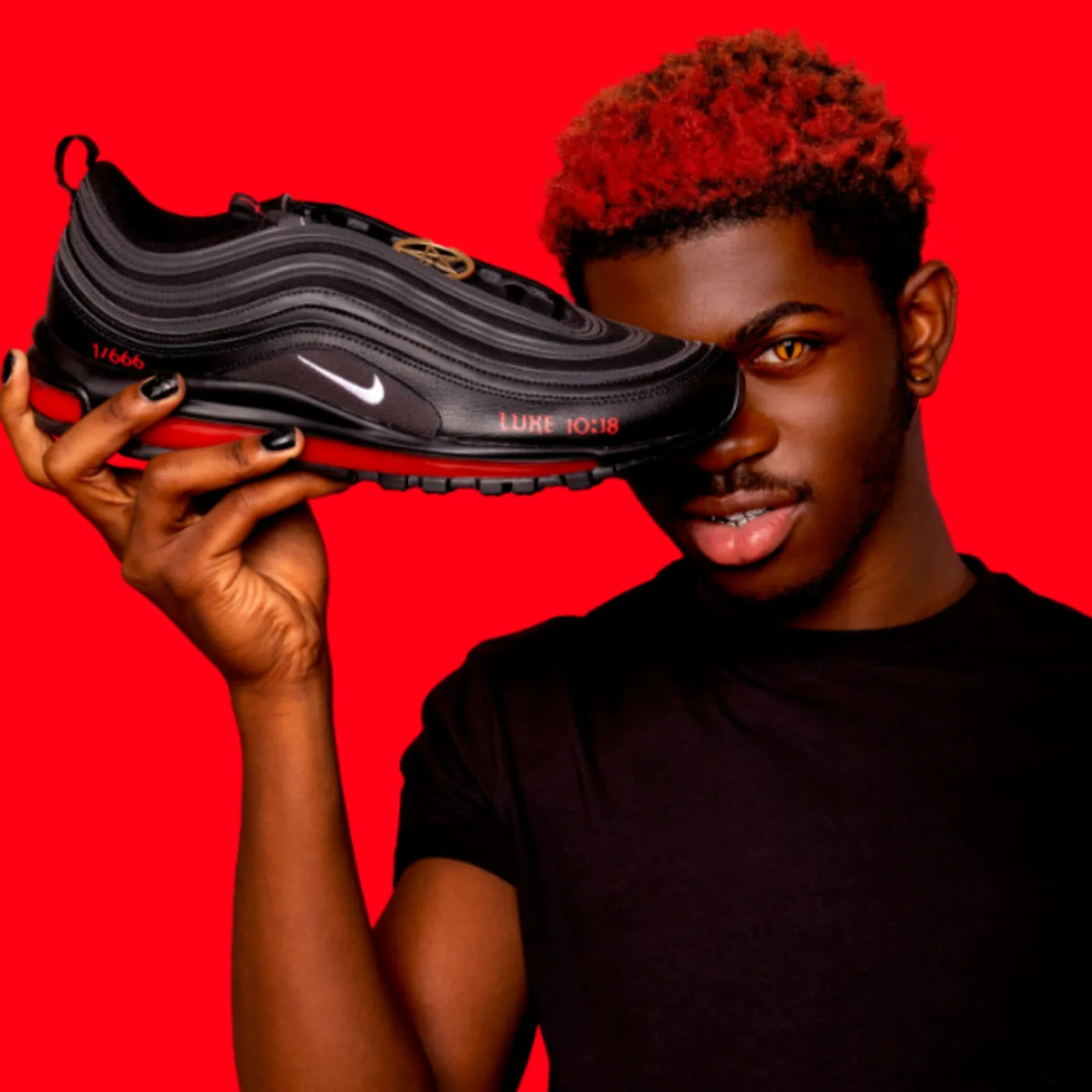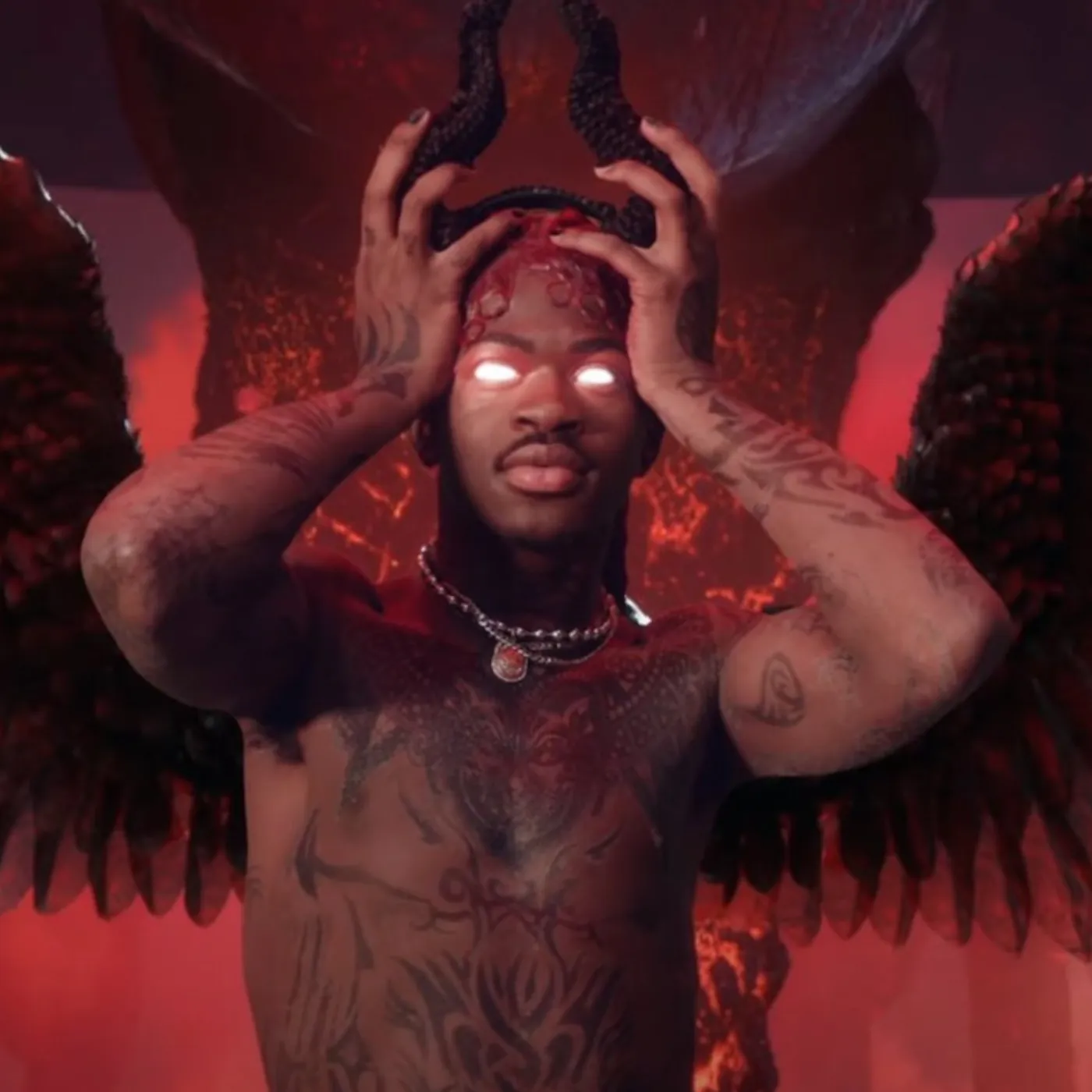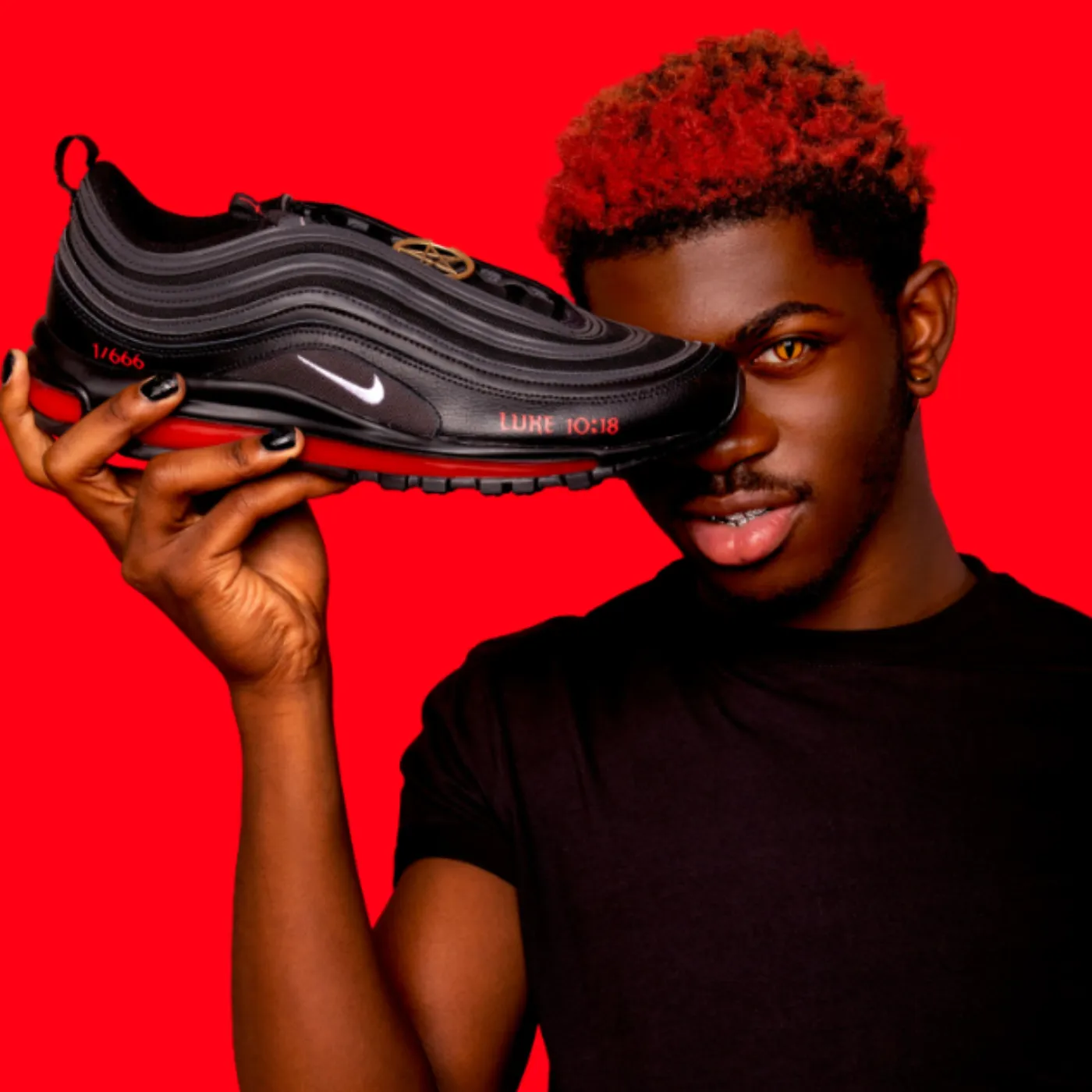

Why Lil Nas X’s ‘Satan Shoes’ Became the Most Controversial Sneakers in History
The Satan Shoes collaboration between Lil Nas X and the creative collective MSCHF quickly became one of the most talked-about sneaker releases in recent history. Limited to only 666 pairs, the shoes captured global attention due to their bold design and highly controversial concept. Each sneaker featured a drop of real human blood in the midsole, combined with custom artwork and unique symbolism that challenged traditional sneaker norms. The shoes immediately sparked debates among sneaker enthusiasts, collectors, and media outlets, ensuring that the Satan Shoes would be remembered as one of the most provocative and high-profile releases in pop culture.
Design Features and Symbolism
The Satan Shoes were built on the classic Nike Air Max 97 silhouette but were significantly altered to create a statement. The design incorporated a red and black color scheme, custom graphics, and a visible chamber containing human blood mixed with ink. MSCHF’s intention was to create an artistic statement that questioned boundaries in sneaker culture and commercial collaborations. The shoes also included symbolic references that added layers of meaning for collectors and fans. These distinctive features made the sneakers highly recognizable and instantly sparked conversations worldwide about art, commerce, and ethics in design.

Public Reaction and Hype
The release of the Satan Shoes created an immediate buzz across social media platforms like Instagram, Twitter, and TikTok. Fans of Lil Nas X, sneaker collectors, and enthusiasts quickly shared photos, videos, and opinions, fueling a viral conversation. While some praised the collaboration as a bold artistic expression, others criticized it for pushing ethical boundaries in design and marketing. The limited edition nature of the shoes, combined with celebrity involvement and shock value, contributed to unprecedented media coverage, establishing the shoes as a significant cultural phenomenon.
Nike’s Response
Nike, the iconic sportswear brand, swiftly took legal action against MSCHF. The company claimed trademark infringement, arguing that the Satan Shoes could confuse consumers into thinking Nike had endorsed or produced the sneakers. The legal battle highlighted the tension between intellectual property rights, brand reputation, and artistic experimentation. Nike’s lawsuit emphasized the importance of protecting a brand while addressing the growing trend of provocative, celebrity-driven collaborations in the sneaker market.
Legal Proceedings and Settlement
The lawsuit filed by Nike led to a high-profile legal conflict. MSCHF defended the shoes as a form of artistic expression, stressing their limited edition status and clarifying that the product was intended as a collectible statement rather than an official Nike release. Media outlets closely followed the case, which prompted widespread discussion about the boundaries of creative freedom in commercial products. Ultimately, the parties reached a settlement, requiring MSCHF to offer refunds to buyers and halt further sales, while allowing the controversy to remain part of sneaker history.
Cultural Impact of the Satan Shoes
The Satan Shoes left a lasting impact on sneaker culture and pop culture more broadly. They generated debates about artistic freedom, marketing ethics, and the limits of creative expression. The shoes were discussed not only for their design but also for their cultural significance, merging celebrity influence with provocative art. Collectors, critics, and fans analyzed the project as an example of how limited edition releases can shape the perception of fashion, music, and media. The shoes became a symbol of rebellion, creativity, and bold marketing strategy.
Collector Interest and Market Reaction
Despite the controversy, the Satan Shoes became highly sought-after in the resale market. With only 666 pairs available, collectors recognized the shoes as rare and valuable pieces of sneaker history. Resale prices surged, reflecting the combination of celebrity involvement, shocking design, and cultural relevance. The release demonstrated how limited-edition sneakers could transcend fashion, becoming symbols of pop culture, artistic expression, and market-driven scarcity.
Role of Social Media
Social media amplified the impact of the Satan Shoes. Platforms like Instagram, Twitter, and TikTok allowed fans and critics to share content, discuss ethical considerations, and celebrate the design. Viral content, memes, and unboxing videos contributed to global awareness, ensuring the story reached audiences beyond the sneaker community. The extensive social media coverage helped solidify the shoes’ reputation as a landmark event in both sneaker culture and celebrity-driven marketing.
Ethical Considerations
The Satan Shoes raised ethical questions about the use of unconventional materials in consumer products. Critics debated whether incorporating human blood in sneakers crossed a moral line, while supporters argued it was a provocative artistic statement. The conversation highlighted the tension between creative freedom, brand responsibility, and public reception. The debate reinforced the idea that limited-edition collaborations can provoke cultural discussion while testing boundaries in design and marketing.
Media Coverage and Public Conversation
The release of the Satan Shoes generated extensive media coverage. News outlets, fashion publications, and online blogs covered the legal battle, celebrity involvement, and public reactions. The story dominated headlines, demonstrating the power of a well-executed controversial release. Discussions emerged around celebrity marketing, ethical design, and the evolving dynamics of sneaker collaborations. This widespread attention cemented the shoes’ status as a cultural milestone.
Long-Term Cultural Relevance
Even years after the release, the Satan Shoes remain a reference point in sneaker culture and pop culture. They are frequently cited in discussions about provocative marketing, celebrity influence, and artistic collaborations. The project exemplifies how a limited release can become a lasting cultural statement, influencing trends in fashion, design, and collectible sneakers. It also demonstrates the continued relevance of creative risk-taking in a highly competitive market.
Lessons for Brands and Artists
The Satan Shoes controversy offers important lessons for brands, artists, and designers. The case underscores the importance of trademark protection, careful marketing strategies, and consideration of public perception. It also illustrates how social media can magnify both hype and criticism, creating a global conversation around a product. Brands can study this example to understand the delicate balance between artistic expression, marketability, and corporate responsibility.
Legacy in Sneaker History
Today, the Satan Shoes are regarded as one of the most controversial and collectible sneaker releases ever. Their limited edition design, connection to a global superstar, and provocative elements make them highly valued among collectors, fans, and cultural commentators. They remain a symbol of artistic risk, celebrity influence, and the evolving landscape of sneaker culture. The shoes are a reminder of the power of design, marketing, and controversy to create lasting cultural impact.

Lasting Influence
The collaboration between Lil Nas X and MSCHF demonstrates the enduring influence of celebrity-driven art projects. The Satan Shoes sparked conversations, challenged traditional norms, and highlighted the complex intersection of fashion, art, and commerce. The release shows that provocative ideas, when paired with limited availability and celebrity involvement, can achieve global attention and cultural significance. The shoes continue to be a reference point for collectors, designers, and fans seeking examples of innovative marketing and memorable pop culture moments.


















